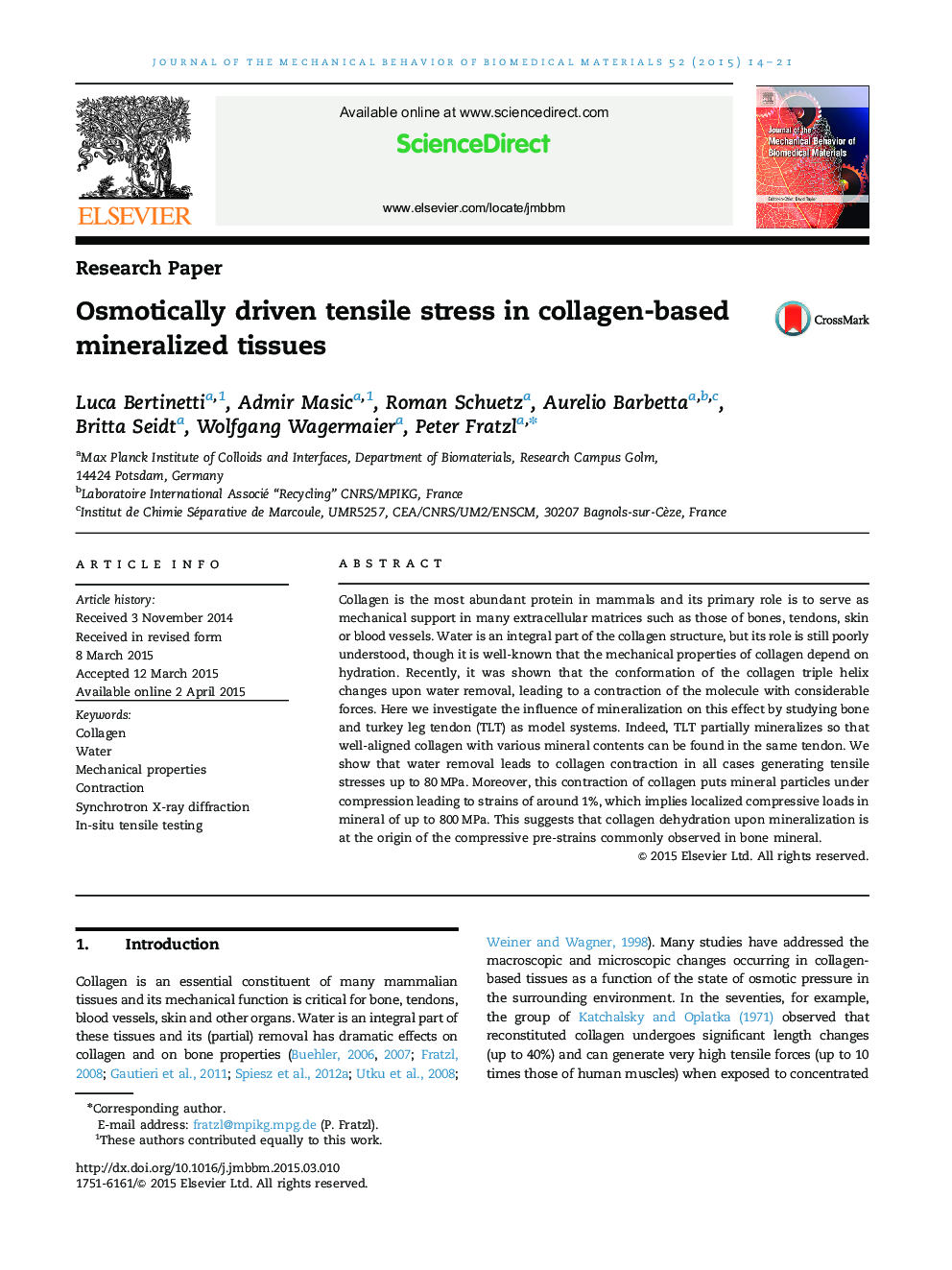| Article ID | Journal | Published Year | Pages | File Type |
|---|---|---|---|---|
| 7208379 | Journal of the Mechanical Behavior of Biomedical Materials | 2015 | 8 Pages |
Abstract
Collagen is the most abundant protein in mammals and its primary role is to serve as mechanical support in many extracellular matrices such as those of bones, tendons, skin or blood vessels. Water is an integral part of the collagen structure, but its role is still poorly understood, though it is well-known that the mechanical properties of collagen depend on hydration. Recently, it was shown that the conformation of the collagen triple helix changes upon water removal, leading to a contraction of the molecule with considerable forces. Here we investigate the influence of mineralization on this effect by studying bone and turkey leg tendon (TLT) as model systems. Indeed, TLT partially mineralizes so that well-aligned collagen with various mineral contents can be found in the same tendon. We show that water removal leads to collagen contraction in all cases generating tensile stresses up to 80Â MPa. Moreover, this contraction of collagen puts mineral particles under compression leading to strains of around 1%, which implies localized compressive loads in mineral of up to 800Â MPa. This suggests that collagen dehydration upon mineralization is at the origin of the compressive pre-strains commonly observed in bone mineral.
Keywords
Related Topics
Physical Sciences and Engineering
Engineering
Biomedical Engineering
Authors
Luca Bertinetti, Admir Masic, Roman Schuetz, Aurelio Barbetta, Britta Seidt, Wolfgang Wagermaier, Peter Fratzl,
